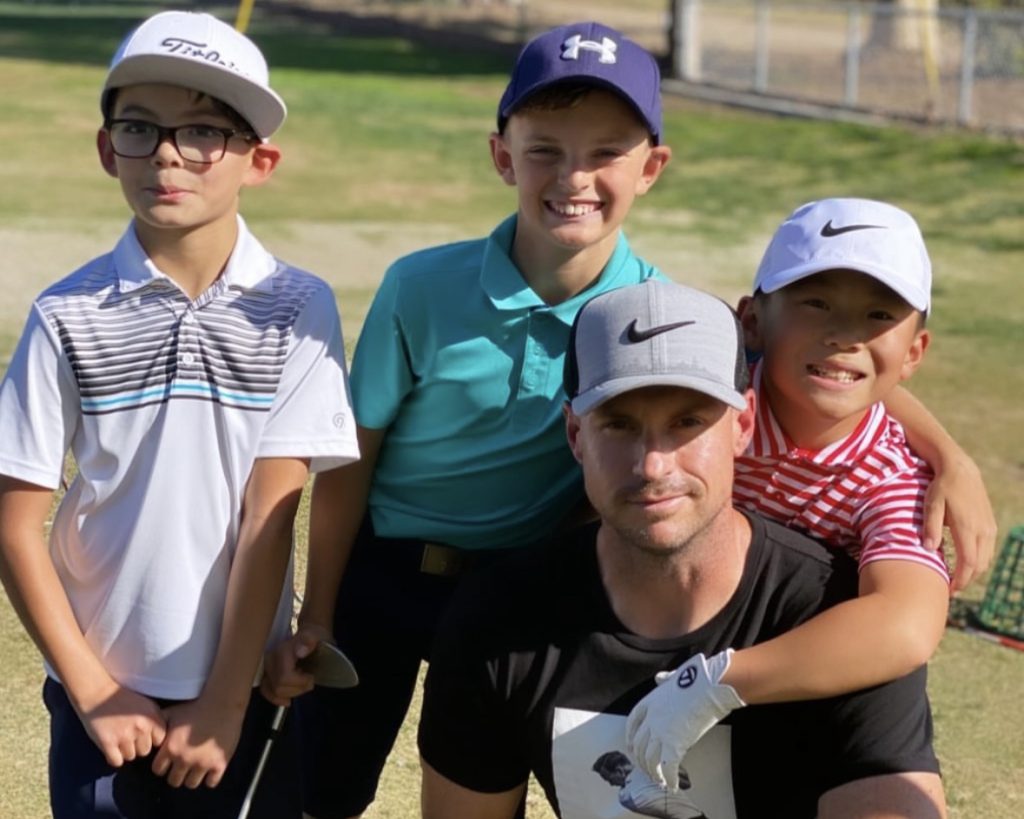Introduction:
Welcome, golfers, to JJ’s Training the Gamer Golf Station! In this blog, we will dive into the world of force and torque in the golf swing. As golfers, we all strive to generate power and speed, but understanding how to effectively distribute that energy is key. Join James Jordan (JJ) as he shares his insights on force, torque, and how to optimize your swing mechanics. Get ready to elevate your game to new heights!
The Role of Force in the Golf Swing:
Force, the act of pushing or pulling, is a crucial element in every athletic movement, including the golf swing. In this blog, we will explore the specific applications of force in the golf swing and draw comparisons to other sports such as baseball and hockey. By understanding the fundamentals of force, you will be able to generate more speed and momentum in your swing.
Introducing Torque:
While force is essential, it is not the sole factor in maximizing swing performance. Enter torque—a rotational force that enables the effective distribution of energy. We will delve into how torque contributes to swing power and highlight the significance of twisting and hinging motions for optimal results.
Training Station Setup:
To help you practice and master the concepts discussed, JJ presents his exclusive training station setup. Follow these step-by-step instructions to ensure proper foot positioning, posture, and club placement. This training station is specifically designed to enhance hip mobility, promote correct swing mechanics, and facilitate the efficient distribution of force through torque.
The STATION!
JJ’s training station:
Remember, it’s important to consult with a professional trainer or coach before starting any new training program to ensure it is suitable for your individual needs and abilities. James can be reached in the contact form.
- Feet Position:
- Place your feet outside your shoulder-width around 2 1/2 feet of space in foot width, with the toes slightly flared out.
- The weight distribution should be evenly distributed between both feet, on the front of the shoe laces meaning balls of the feet.
- Chest and Knees:
- Keep your chest slightly tilted forward, over the hands as a feel, with a sense of relaxed athleticism. Having a Flat back, even some who round it out with C posture is favorable.
- Bend your knees first then tilt your chest forward in that order.
- Avoid excessive bending or straightening or “Sitting” as a feel in your knees. Your knees are relaxing.
- Hands and Clubhead Position:
- Position your hands slightly ahead of the clubhead at address, creating a tiny bit of forward lean left of the ball.
- The clubhead should be resting behind the golf ball 8 inches.
4) Keep your forearms relaxed and allow them to swing freely, following the rotation of your body. - As you swing through the ball, focus on transferring the force from your forward pivot / rotation unloading the trail arm and right hand. It feels like the inside trail palm is in motion pointed down > inside of the ball, with that right palm moving to target. This is the “before impact” sentiments. Then at impact. The clubs toe, works toe up as the release “stopping” with the club parallel to the ground. The clubhead (once you stop with an abbreviated finish) will be pointed in the same manner as your spine so slightly left of your left rib cage, not toward the ground or toward the sky.
- The torque generated by the body’s rotation should be dispersed through the club shaft and into the ball upon impact, from all the sentiments mentioned above.
It’s like your “shaking the hand” of someone standing a foot (think 1’ o’clock on a clock) 1 foot after impact. Go at full turn, half speed, with an abbreviated finish, “doing 5 to 10 every time you are training this.”
- Measurement and Feel:
- The purpose of this training station is to help you understand and feel the proper movements and forces involved in the golf swing.
- By practicing and repeating the correct positioning and movements, you can develop a sense of how the club interacts with the ball and the sensations associated with a well-executed swing.
- Over time, this training will help you develop consistency, accuracy, and power in your golf game.
Conclusion:
Mastering the interplay between force and torque is crucial for any golfer seeking to optimize their swing mechanics and overall performance. By understanding the specifics of force in the body, recognizing similarities across different athletic movements, and embracing the role of torque, you can unlock the true potential of your swing. Incorporating “JJ’s Training the Gamer Golf Station” into your practice sessions will undoubtedly yield exciting results. So, head to the range, give it a try, and witness your shots soar to new distances!
Torque plays a crucial role in generating distance in a golf swing. Here’s how torque helps in this aspect:
- Efficient Energy Transfer: Torque allows for the efficient transfer of energy from the golfer’s body to the clubhead during the swing. When the golfer generates torque by creating a rotational force, it enables the stored energy to be released and transferred to the clubhead at impact. This efficient energy transfer leads to increased clubhead speed, which directly contributes to generating more distance in the golf shot.
- Increased Clubhead Speed: Torque helps in increasing the clubhead speed, which is essential for generating distance in the golf swing. By creating torque through the coordinated movement of the body, especially the hips and core, golfers can generate a powerful rotation that adds speed and force to the swing. The faster the clubhead speed, the more distance the golf ball can travel.
- Maximizing Potential Energy: Torque allows golfers to maximize the potential energy stored in their body and efficiently release it through the swing. By generating torque, golfers build up potential energy in their muscles and body, which is then converted into kinetic energy during the swing. This conversion of potential energy to kinetic energy results in increased clubhead speed and, consequently, more distance in the golf shot.
- Optimal Launch Conditions: Torque helps in creating optimal launch conditions for the golf ball, which directly affects the distance. When torque is applied correctly, it allows the golfer to achieve a proper angle of attack and launch the ball at an optimal trajectory. This optimal launch angle, combined with the increased clubhead speed generated by torque, maximizes the distance the ball can travel.
In summary, torque in the golf swing contributes to generating distance by enabling efficient energy transfer, increasing clubhead speed, maximizing potential energy, and creating optimal launch conditions. By understanding and utilizing torque effectively, golfers can enhance their distance capabilities and achieve longer shots on the golf course.
Get to work Golfers! Your BEST drives are a few range sessions away from being great! You deserve to have this reality take place. Email, text or please tell me all about it in our next session!






